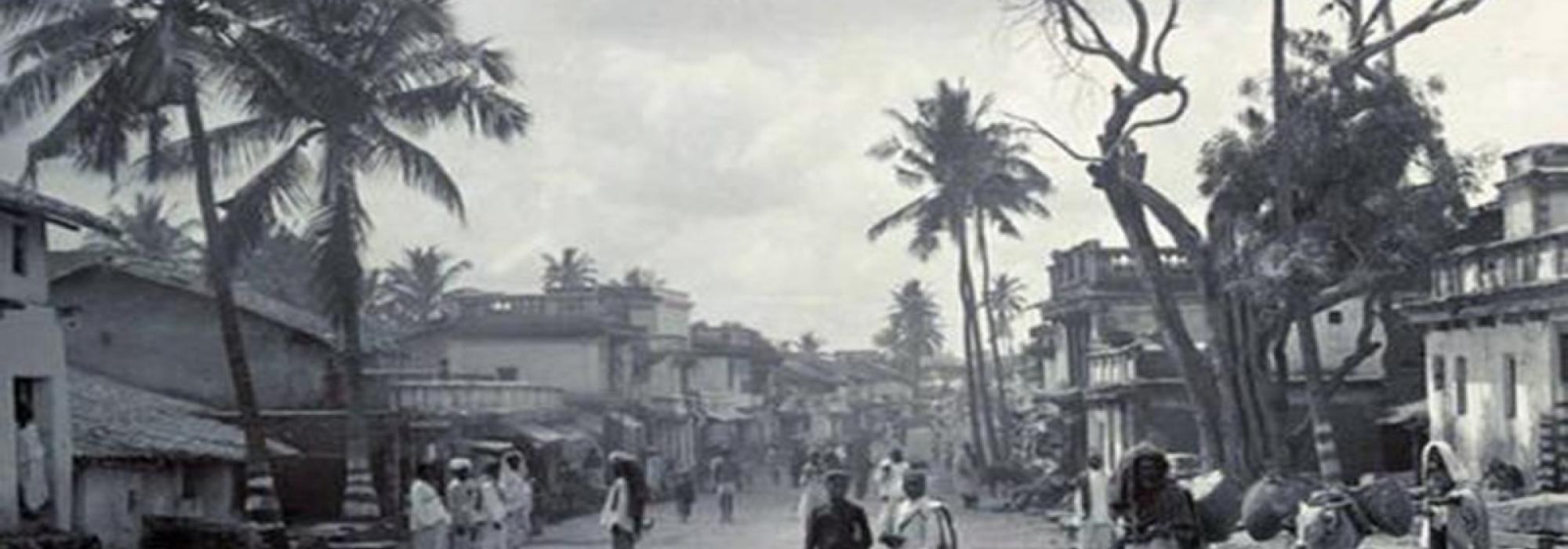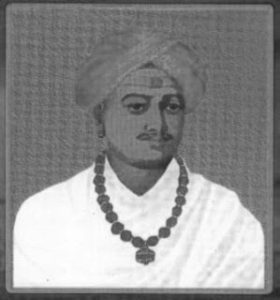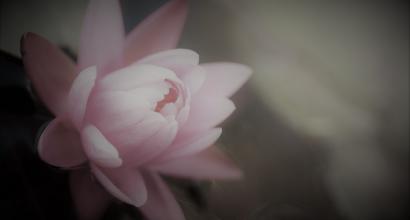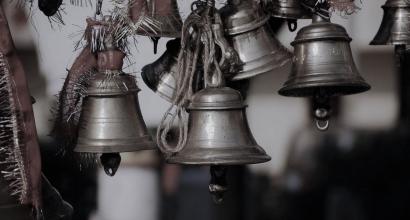M Venkatakrishnaiah, M S Puttanna, C Subbarao, and other language enthusiasts in Mysore decided to publish a monthly magazine called Hitabodhini. They decided it would have topics and discussions useful to the general readers that would encompass literature, science, history, and social welfare. After having finalized the size and the design, they decided to print a poem on the cover page that would convey their purpose. How to obtain such a poem? They requested many people. Those scholars composed their poems and handed it to them. But none of those poems were unanimously accepted. A few people accepted the poems due to some reasons. One day, all those people involved in the publication assembled together – to make a decision. Among those who were in attendance, there were people who had a taste for poetry and were in the habit of composing poems. But everyone was wondering about what was to be done.
Basavappa Shastri’s Poetic Prowess
In the mean time, Basavappa Shastri, who was also invited, arrived at the gathering. When the leaders of that assembly narrated their predicament to Shastri, he smiled, and picking up a pen that was lying around he scribbled something on his left thumb; then he said, “Write down what I recite; we’ll see how it turns out” and read out the following: āvaḻa kaiviḍidā rā- | jīvabhavaṃ nikhilalōkanirmāṇakalā- || kōvidanādano ā vā- | gdēvate meyvettu merege hitabōdhiniyoḻ || (Brahmā held her hand in marriage and was then able to create the three worlds, becoming the great god of creation. May that same Vāgdevī pervade the pages of the Hitabodhini.) Upon listening to this verse, everyone’s face beamed with joy. “This is how a poem should be, isn’t it?” they said.
Basavappa Shastri had gained mastery over both Kannada and Sanskrit. Not only did he translate plays like Śākuntala, Śūrasenacarite, Ratnāvali, and Uttararāmacarite into Kannada, he also wrote campūgranthas like Damayantī Svayaṃvara and Kṛṣṇarājyābhyudaya as well as ṣaṭpadigranthas like Sāvitrīcaritre in Kannada. He composed several Sanskrit stotras like Śivabhakti Sudhātaraṅgiṇi, Sarasvatīdaṇḍaka, and Aṣṭamūrti Tanayāṣṭaka. Several songs in the Bālikāgītamuktākalāpa that was published during the reign of Chamarajendra Wadiyar were composed by Shastri. The famous Kāyau śrī gaurī is also his composition. Basavappa Shastri was a disciple of Vidvān Garalapuri Shastri, who was famous as a scholar of both Kannada and Sanskrit during the reign of Mummudi Krishnaraja Wadiyar. Basavappa Shastri’s Kannada student was Ayya Shastri, the son of Garalapuri Shastry. Basavappa Shastri was a good rasika. Great physical features, radiance, soft and sweet speech – these treasures made everyone who met him desire to befriend him. Shastri had many famous and influential people in his circle of friends, the chief among them being the landlord Nilagiri Paapanna. In Bangalore, Paapanna’s house was in the fort – i.e., the place where the maternity hospital is situated currently. I’ve heard from many sources that Paapanna is an admirer of music and literature as well as a generous man. Venkatakrishnaiah used to mention this often.
Rachoti Shastri
During 1912-13 when I visited Mysore during Dasara, one afternoon I went to Venkatakrishnaiah’s house to meet him. I was told that he was in school. When I went to Marimallappa School and asked for him, someone said, “He’s upstairs!” I sent word that I had come. He sent instructions asking me to go upstairs instead. When I went there, I saw a large gathering. People like M Shyama Rao and Bapu Subba Rao were present. The attraction at that time was a Bhāratavācana by one Rachoti Shastri. He sang in various rāgas the magnificent poetry composed by Kumāravyāsa and gave a wonderful experience to the listeners. What a voice! What a wonderful sense of ārohaṇa and avarohaṇa! And the pronunciation! Such animated facial expressions and hand gestures! Everyone was mesmerized and listened to him forgetting everything else. Shyama Rao turned towards me and asked:
SR: “Hadn’t you heard him before?”
Me: No! “Who’s he?”
SR: He’s a student of Basavappa Shastri. He’s treading the path of his guru!”
By that time, it had already been many years since the death of Basavappa Shastri. Venkatakrishnaiah said, “If you had listened to Basavappa Shastri’s rendition, how much happier you would have become!”
I didn’t have that good fortune.
After returning to Bangalore, I casually remarked about this incident to Puttanna Chetty. He told the same thing as Venkatakrishnaiah.
I’ve heard from many elders that just as Basavappa Shastri had great talent in poetry, he also had a grasp over the subtleties of singing and a keen musical sense.
Whenever Basavappa Shastri visited Bangalore, he stayed in the house of the erstwhile senior surgeon Dr. Armugam Mudaliar and his brother Kuppuswami Mudaliar. I’ve heard that he translated Bhavabhūti’s Uttararāmacarita to Kannada while he was staying in Kuppuswami Mudaliar’s house and that sections of the manuscript were kept in the house for some time. I’ve observed that both Dr. Armugam and Kuppuswami Mudaliar have a spiritual bent of mind. Both are generous. But what made it special was that they kept their charity and philanthropy a secret. They never breathed a word about the good deeds they did. If someone found out by some means, they would brush it off, making a joke about it.
I feel that the pronunciation of our students will greatly improve—and will be ear-worthy—if they can learn from memory the Sarasvatīdaṇḍaka that appears in Basavappa Shastri’s Damayantī Svayaṃvara.
The works of Basavappa Shastri is not widely taught in today’s schools and colleges – in my view, among the lacunae of today, this is a primary shortcoming.
This is an English translation of the third chapter of D V Gundappa’s Jnapakachitrashaale – Vol. 3 – Sahityopasakaru. Edited by Hari Ravikumar. Thanks to Shatavadhani Dr. R Ganesh for his kind review and thoughtful feedback.












































